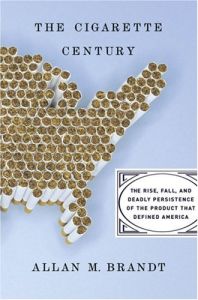
The Cigarette Century
The Rise, Fall, and Deadly Persistence of the Product That Defined America
Published by Basic Books, a subsidiary of Perseus Books LLC
ISBN: 9780465070473
Pages: 600
Recommendation
Today, it is hard to imagine that people once considered cigarette smoking glamorous. It’s equally hard to find an adult in the U.S. who has not experienced the devastating affects of smoking, either losing a loved one or battling cancer. The rise of the cigarette left nothing untouched. As it burned through American culture, smoking changed the way industry, government, science and health organizations operate and interact. In this comprehensive, scholarly work, Harvard professor Allan M. Brandt impressively presents a thorough, well-researched, soundly documented exposé about the impact of cigarettes on American life. His user-friendly book is well laid out and easy to understand. Surprisingly, it’s also captivating and emotional. Even cynics will feel outraged at big tobacco’s manipulations, deceit and lies, though Brandt’s evenhanded reporting lets the facts speak for themselves. getAbstract recommends this illuminating work to researchers, public health officials, business historians and laymen alike.
Summary
About the Author
Allen M. Brandt is the Amalie Moses Kass Professor of the History of Medicine at Harvard Medical School. His books include No Magic Bullet: A Social History of Venereal Disease in the United States since 1880.

















Comment on this summary